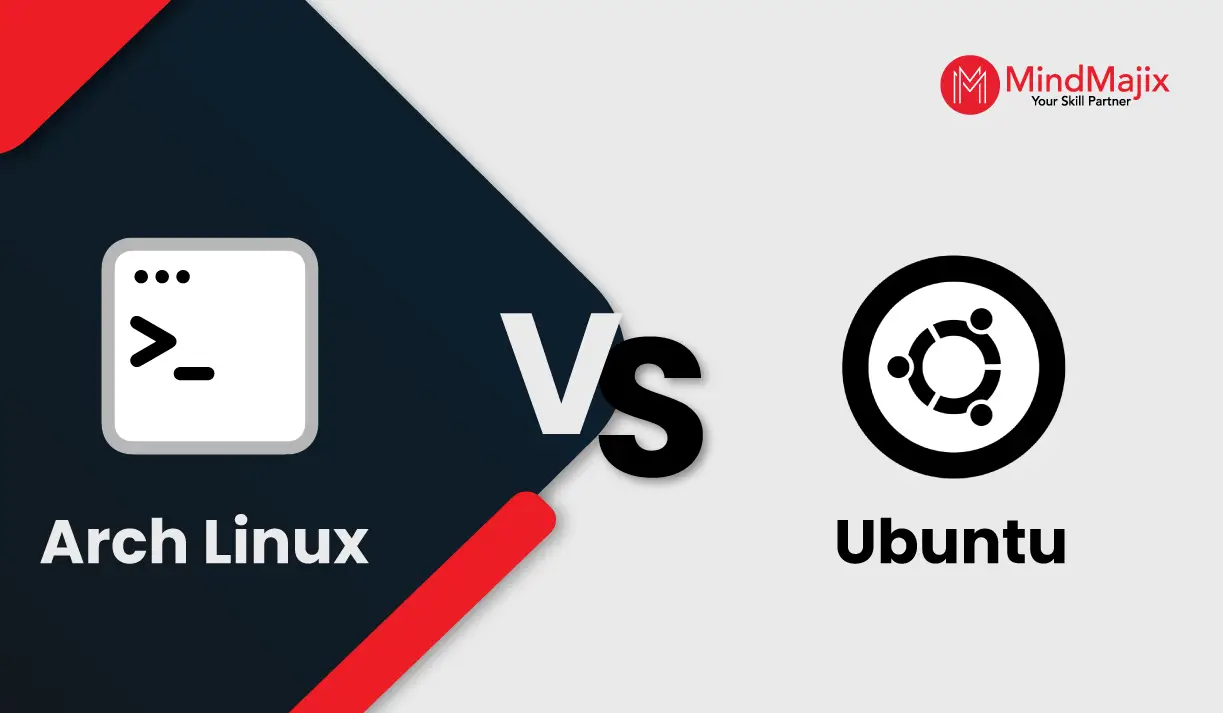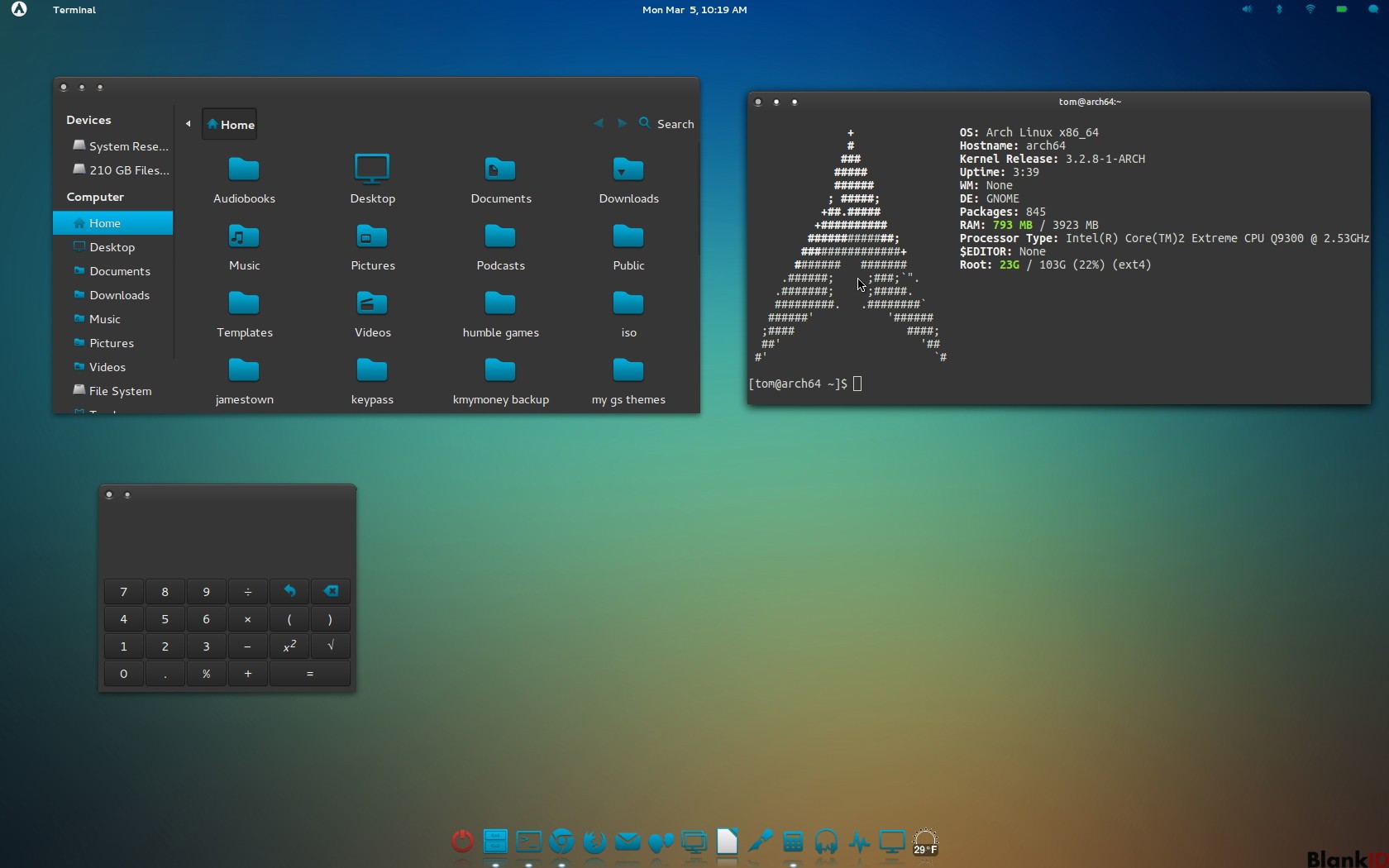Arch Linux vs. MX Linux: A Comparison of Simplicity and Control

In the realm of Linux distributions, Arch Linux and MX Linux stand out as contrasting options that cater to different user preferences. This comparison explores the key differences between these distributions, highlighting their respective strengths and target audiences.

Arch Linux: A Minimalistic Approach

Arch Linux is renowned for its minimalistic design and user-centric approach. It offers a bare-bones operating system that users can customize to their liking. Installing Arch Linux is a manual process that requires a deep understanding of the Linux command line. However, this manual approach also grants users a high degree of control over their system configuration. Regular updates and a rolling release model ensure that Arch Linux remains on the cutting edge of Linux development.
MX Linux: User-Friendly and Stable
MX Linux, in contrast, emphasizes user-friendliness and stability. It is built upon the stable Debian distribution, which provides a solid foundation. Out-of-the-box, MX Linux comes preconfigured with a user-friendly graphical interface (XFCE) and a wide range of essential applications. Users can easily install additional software through the system’s package manager. MX Linux’s focus on stability means that updates are less frequent but more thoroughly tested.
Installing and Using
The installation process for Arch Linux is more challenging than MX Linux. It requires a manual approach that may be daunting for beginners. MX Linux, on the other hand, offers a user-friendly graphical installer that simplifies the process.
Target Audience
Arch Linux suits users who value flexibility and control. It is an ideal choice for advanced users, developers, and enthusiasts who enjoy customizing their systems to meet specific needs. Conversely, MX Linux is designed for users who prioritize stability and ease of use. Beginners, desktop users, and those who prefer a more consistent experience will find MX Linux to be a better fit.
Conclusion
Arch Linux and MX Linux represent two distinct approaches to Linux distributions. Arch Linux empowers users with a highly customizable and cutting-edge experience, while MX Linux provides a stable and user-friendly environment. The choice between these distributions depends on the user’s preferences and technical proficiency.## Arch Linux Vs. Mx Linux: A Contrast Of Simplicity And Control
Executive Summary
Arch Linux and Mx Linux are two popular Linux distributions known for their distinct approaches to usability and customization. Arch Linux emphasizes user control and customization, while Mx Linux prioritizes simplicity and ease of use. This article compares and contrasts these two distributions, examining their key features, strengths, and weaknesses to help readers choose the best option for their needs.
Introduction
The world of Linux distributions offers a myriad of choices, each tailored to specific user preferences. Arch Linux and Mx Linux represent two ends of the spectrum – one emphasizing user control and customization, the other prioritizing simplicity and ease of use. This comprehensive guide will delve into the nuances of these distributions, highlighting their strengths, weaknesses, and suitability for different user profiles.
1. Installation and Setup
Arch Linux:
- Manual installation process, requiring command-line proficiency.
- Highly customizable, allowing users to tailor the system to their specific needs.
- Suitable for experienced Linux users who value customization and control.
Mx Linux:
- User-friendly graphical installer for straightforward installation.
- Pre-configured with essential software and desktop environment.
- Ideal for beginners and users seeking a hassle-free setup.
2. Package Management
Arch Linux:
- Uses the Pacman package manager, known for its speed and comprehensive package selection.
- Rolling release model, providing continuous updates for the latest software versions.
- Requires manual intervention for system updates and package installation.
Mx Linux:
- Employs the APT package manager, offering a vast repository of software.
- Stable release model, prioritizing stability over bleeding-edge software.
- Automatic updates and a graphical package manager for ease of use.
3. Desktop Environment
Arch Linux:
- Supports various desktop environments (DEs), allowing users to choose their preferred interface.
- Highly customizable, enabling users to tailor the look and feel of the DE.
- Requires manual configuration and troubleshooting for DE installation and customization.
Mx Linux:
- Comes with the Xfce desktop environment, known for its lightweight and user-friendly design.
- Pre-configured with a visually appealing and intuitive interface.
- Limited customization options compared to Arch Linux, but provides a stable and user-friendly experience.
4. User Interface
Arch Linux:
- Command-line oriented, relying on terminal commands for system management and configuration.
- Requires terminal proficiency and knowledge of Linux commands.
- Suitable for experienced users who prefer the flexibility and control of the command line.
Mx Linux:
- Graphical user interface (GUI) focused, with menus, icons, and a taskbar for easy navigation.
- Minimal terminal usage required, simplifying system management tasks.
- Ideal for users who prefer a point-and-click interface and dislike command-line interaction.
5. Community and Support
Arch Linux:
- Active online community and documentation, providing support and assistance to users.
- Arch Wiki, a comprehensive resource containing detailed information and tutorials.
- Limited official support channels, relying primarily on user-to-user assistance.
Mx Linux:
- Dedicated forum and IRC channel for user interaction and support.
- Official documentation and support resources maintained by the developers.
- Smaller community compared to Arch Linux, but still offers responsive and friendly support.
Conclusion
Arch Linux and Mx Linux cater to distinct user profiles, offering contrasting approaches to Linux. Arch Linux empowers experienced users with unparalleled control and customization, requiring technical proficiency and a willingness to embrace the command line. Mx Linux, on the other hand, prioritizes simplicity and ease of use, making it an excellent choice for beginners and users seeking a hassle-free, GUI-driven experience. The choice between the two ultimately depends on individual preferences and technical expertise.
Keyword Phrase Tags:
- Arch Linux vs. Mx Linux
- Simplicity and Control
- Rolling Release vs. Stable Release
- Command-Line vs. GUI
- Customization vs. Ease of Use


Enlightening comparison! The intricate details provided a comprehensive understanding of both Arch Linux and Mx Linux. The emphasis on simplicity versus control resonated with me, highlighting the diverse needs of different users.
While the article provides an overview of the two distros, I find the lack of specific examples somewhat lacking. Concrete use cases and real-world scenarios would have added more depth and substance to the comparison.
An excellent piece that delves into the technical aspects of Arch Linux and Mx Linux. The breakdown of package management and customization options was particularly informative and could be valuable to those considering a distro switch.
The argument presented in the article seems to oversimplify the complexities of choosing between Arch Linux and Mx Linux. Both distros have their strengths and weaknesses, and the ‘simplicity versus control’ dichotomy is not always a clear-cut distinction.
Ironic indeed! While the article extols the virtues of simplicity in Arch Linux, its own content is convoluted with technical jargon that only a seasoned Linux user could decipher.
Oh, the classic tale of the control freak Arch Linux user versus the laid-back Mx Linux enthusiast. I wonder, do they ever meet at the coffee shop to compare their… configurations?
Arch Linux: For those who want to build their Lego castle from scratch, piece by piece. Mx Linux: For those who just want to open a pre-made box and enjoy the castle.
I appreciate the article’s attempt to contrast Arch Linux and Mx Linux, but a more comprehensive comparison should explore their respective performance benchmarks, hardware compatibility, and community support.
As a long-time Arch Linux user, I can’t help but sing its praises. The customization and control it offers are unparalleled. And while Mx Linux may be simpler, sometimes you just want to get your hands dirty and build something truly unique!
Ultimately, the choice between Arch Linux and Mx Linux depends on your individual needs and preferences. There’s no one-size-fits-all solution. Both distros have their place in the Linux ecosystem.